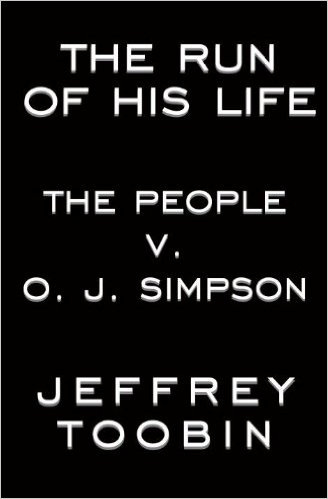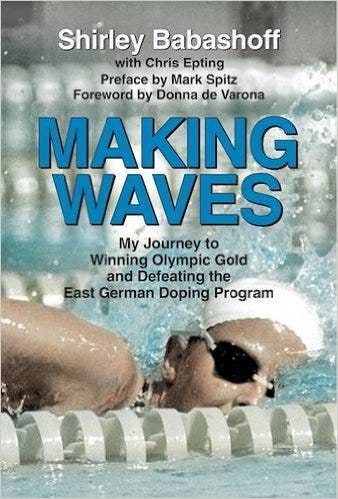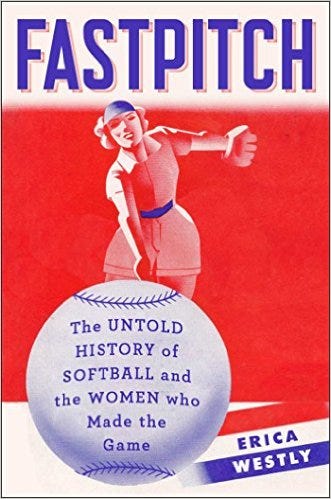Sports Biblio Digest, 6.12.16: Remembering Gordie Howe, Mr. Hockey
News, Views and Reviews About Sports Books, History and Culture
Also In This Issue: Ali Laid to Rest; Revisiting the O.J. Simpson Trial; Tiger Woods, Author-To-Be; What Is a Sport?
Welcome to the Sports Biblio Digest, an e-mail newsletter delivered each Sunday. You can subscribe here and search the archives.
This is Digest issue No. 43, published June 12, 2016. The Digest is a companion to the Sports Biblio website, which is updated every Monday, Wednesday and Friday.
I’d love to hear what you think about the Digest, and Sports Biblio. Send feedback, suggestions, book recommendations and requests for interviews to Wendy Parker, sportsbiblio@gmail.com. You can also follow Sports Biblio on Twitter and hit the “like” button on Facebook.
* * * * * * * *
Gordie Howe, 1928-2016
He played in more games (1,767) and competed in more seasons (32) than any other player in the history of professional hockey. Only Wayne Gretzky scored more than his 801 goals in the National Hockey League.
Gordie Howe left an indelible mark on a sport that, for the duration of most of his illustrious NHL career, was a six-team league.
Howe, who died at the age of 88 on Friday, was known simply as “Mr. Hockey,” but it’s not the statistics that tell the story of what he meant to his sport.
Yet Howe was reluctant to tell his own story, at least in book form, until late in his life, as he was losing his long battle with dementia and after suffering several strokes.
“Mr. Hockey: My Story,” published in 2014, focuses more on Howe’s background as a rough-hewn farm boy from Saskatchewan, and who took his fierce determination (and a sharp set of elbows) to the Detroit Red Wings, where he played for 25 seasons and which he led to four Stanley Cup titles.
Bruce Arthur of The Toronto Star writes that the “Howe hat trick”—a goal, an assist and a fight—was largely a myth. Howe “defined a generation of his sport” that trickled down to younger players to take up the game, including a very well-known example:
“Gordie Howe had time for people, for almost all of his life.
“And that filtered down, as much as the much-exaggerated Gordie Howe hat trick ever did. (Howe hardly ever fought.) Wayne Gretzky’s father Walter told his son to pay attention to how Gordie treated people: how he would look them in the eye, shake their hands. It can’t be a coincidence that of the players who defined their generations — who, of the boys on all the rinks, grew up to be the greatest players of Canada’s nearly sacred game — they have been thoroughly decent people.”
Yet the damage Howe was doing to his body, and especially his brain, is only now getting serious attention, as John Branch wrote in The New York Times in reviewing Howe’s memoir:
“‘Mr. Hockey’ feels like a final reminder of things harder to quantify, like the importance of roots, the devotion to family and, as much as anything, the type of toughness not required of today’s pampered professional athletes.”
The Wall Street Journal took a similar tack, noting that Howe had “no apologies for the concussions doled out when the refs weren’t looking” and was rather matter-of-fact in assessing how he endured for so long:
“What I learned early on was that you had to be a little crazy to survive in the NHL. I found that the surefire way to earn a wider berth was to give someone a good crack.”
The immediate remembrances were about so much more, even for Bobby Orr, who always understood Howe to be “Mr. Hockey.”
Helene St. James, a longtime hockey writer for The Detroit Free Press, recalls that Howe used to tease her about “no girls allowed” in the locker room but always gave her time to talk. Mostly, she remembers the laughter and how down to earth he seemed, even at the height of his fame.
Likewise for her colleague Mitch Albom, who called Howe “the Babe Ruth of Hockey:”
“You lose athletes like this, and there’s a hole on the shelf forever. Nobody slides over. Nobody fills the space.”
In 2014, hockey book blogger Joe Pelletier compiled this list of nine best Gordie Howe books (coinciding with his jersey number). Canadian writer Roy MacSkimming’s 1994 book “Gordie: A Hockey Legend” is considered the most authoritative biography of Howe, although it was unauthorized.
Howe’s visitation Tuesday at Joe Louis Arena and his Wednesday funeral at a Catholic church in Detroit will be open to the public.
Saying Goodbye to ‘The Greatest’
Like last week, I could give you an endless supply of links about Muhammad Ali, who was laid to rest in his native Louisville Friday. The memorial service that followed at a packed arena went nearly three hours long, and included a who’s who of speakers, including Bill Clinton.
Even though this was a national, even global event, I prefer to highlight the best of the hometown press. Here’s Tim Sullivan of the Louisville Courier-Journal with some of that local color. Pat Forde, an L C-J alumnus now with Yahoo! Sports, speaks with locals and those who came from afar to pay tribute to Ali.
And a few tributes collected from earlier in the week:
An SI.com podcast with the legendary photographer Neil Leifer, who was ringside to capture so many of Ali’s most important fights;

At The Undefeated, Sunni Khaled writes about an imperfect icon;
At Time, Kareem Abdul-Jabbar remembers a seminal figure in his growth as a black man in America during racially tense times, as well as a convert to Islam;
At The Ringer, Bryan Curtis writes about Ali’s relationships with crusty sportswriters, many of whom never embraced him, and how he influenced the profession;
The media figure Ali is most associated with is Howard Cosell, with whom had quite a beautiful friendship.
The new O.J. Simpson film: I’ll pass
I’ve heard plenty of great things about “O.J.: Made in America,” a five-part 30 for 30 documentary which debuted on ABC on Saturday and continues this week on ESPN.
(The first episode re-airs on ESPN at 7 p.m. ET Tuesday, right before the second installment. Here’s the trailer and full schedule.)
At NPR, Linda Holmes insists that this story, which begins with Simpson’s 1968 Heisman Trophy-winning season at USC and culminates with his acquittal for the 1994 murder of his wife Nicole Brown Simpson, isn’t really about the athlete-turned-celebrity, but about Americans. Sports Illustrated media writer Richard Deitsch proclaims it’s the best of the 30 for 30 series, but for me it will always be hard to top “The Two Escobars."
I’m not inclined to watch the O.J. film despite the raves, and I realize that’s an odd thing to admit for someone who tracks sports films. I just have no desire to revisit any of this. This is where America went off the rails for me in many respects, culturally and in my own profession, and it’s taken me a while to understand why.
For younger viewers who don’t remember this episode, this could have had the potential of being an instructive film with the proper historical perspective, recreating a culturally critical time in the country's history.
Instead, director Ezra Edelman’s treatment appears to be playing into the current racial and sexual dynamic in America. Anne Helen Petersen of BuzzFeed basically gives the plot away in her fawning of the film:
“By situating the trial amid 50 years of abuse and distrust between police forces and the black community, O.J.: Made in America makes it impossible to think of the trial in a vacuum — as disarticulated from issues of race and masculinity, or as unconnected to the current tensions that structure the Black Lives Matter movement.”
This is exactly the reception I was afraid of. The O.J. saga became the segue for present-day media and social and cultural activists, who see everything, as Petersen happily clucks in her article, through the lens of cultural “intersectionality.” Race and sex, in particular, galvanized and obsessed the media, and by extension, the American public, during those two terrible years of this case that was constantly beamed on television.
Despite the racial attitudes of L.A. police detective Mark Fuhrman, Simpson was cleared of the murder of his wife, a knockout blonde, and Ronald Goldman. The ineptitude of the prosecution and egomaniacal judge Lance Ito played major roles, among many other factors, as well as the vacuousness of eyewitness Kato Kaelin.
The rhyming arguments of Simpson’s chief defender, the African-American Johnnie Cochran (“If the glove doesn't fit, you must acquit”) and the quick deliberations of a mostly black female jury exaggerated the focus of race in regards to Simpson, who lived among the celebrity elite in an exclusive, mostly-white neighborhood. His trial became racially charged because his lawyers, and a craven media establishment, wanted it that way.
“O.J.: Made In America” references the racially embattled reign of former L.A. police chief Daryl Gates, who stepped down after the Rodney King beating in 1991 (and before O.J. went to trial), as well as the spectre of decades-long institutional racism in the City of Angels. Not surprisingly, Petersen is in total sympathy with the Simpson jury, for reasons having little to do with the alleged crime at hand:
“Watching Made in America, their decision makes sense. It might have been, at least in part, compensation for the racially charged injustice of the Rodney King trial — but the jurors don’t seem stupid, or duped, but disenfranchised citizens exercising the little power they had.”
The verdict may make sense to a denizen of the millennial press, but this distracts from the reality of the bloody bodies of Simpson’s former wife and another man in a residential courtyard in Bel Air, which should not be confused with Watts or Compton.

In many ways, Jeffrey Toobin’s book “The Run of His Life,” based on his story for The New Yorker, “An Incendiary Defense,” set the table for what was to come. Yet Toobin, unlike others in the media and other accounts of the case that have followed, took a dim view of Simpson’s defense theory.
I distinctly remember the reaction to the verdict in my midst: Crowds of African-Americans were seen celebrating on local television in downtown Atlanta, not far from my newsroom; whites were shown bewildered. I know that’s not how everybody in either of those racial groups thought, but I disliked how polarized I was being made to feel. I kept my silence, knowing it wasn’t smart to be honest.
While Simpson was later convicted of burglary and is serving a 33-year sentence in Nevada, his murder trial, and the media feeding frenzy that was born from that ordeal, has perpetuated a narrative about race in America that seems as entrenched and off the mark as ever.
As critic Allen Barra writes in The Daily Beast, the film “serves so perfectly as an expression of the psyche of liberals tortured by the murders, the trial, and the aftermath.”
More than 20 years after a terrible crime was committed, we remain fixated on everything but the fact that two young children lost their mother in brutal fashion. The Goldman family that openly grieved during the trial is regarded as a similar afterthought, the pain of their loss an inconvenience to the storyline of a nearly eight hour-film.
A Few Good Reads
At Newsweek, John Walters used ostrich racing in South Africa as a point of inquiry for the following question: What Is A Sport? This is an interesting, quirky piece, best answered by British academic and historian David Goldblatt, author of the forthcoming “The Games: A Global History of the Olympics” and several acclaimed soccer books: “The problem is, what is and what isn’t a sport is decided by a collective consciousness;”
For the first time since 1904, golf will be on the Olympics roster at Rio de Janeiro. Rachel Axon of USA Today writes about the discovery of the last gold medals handed out that year, to H. Chandler Egan, at the St. Louis Games. The items are on display all next week during the U.S. Open at Oakmont Country Club near Pittsburgh, and at the World Golf Hall of Fame and Museum starting June 23;

Forty years after female swimmers from East Germany dominated Olympic swimming events (and were eventually found to have been the victims of state-sponsored doping), a new film about the saga premiered this week at the L.A. Film Festival. “The Last Gold” is a 15-minute short that will appear in U.S. cinemas in July, right before Shirley Babashoff, one of the American swimmers in Montreal, publishes her memoir “Making Waves.” Babashoff, branded a poor sport at the time for her accusations, has keep quiet for decades until now, and wants the East German swimmers to be stripped of their medals. Steven Ungerleider’s 2001 book, “Faust’s Gold,” is the best English-language source for the whole sordid East German doping scheme that was finally revealed in the years after the fall of the Berlin Wall and the opening of Stasi archives.
News About Sports Books
Tiger Woods is collaborating with sportswriter Lorne Rubenstein on a book about his victory in the 1997 Masters, which galvanized his career;
Andrew Maraniss, author of “Strong Inside,” the story of Perry Wallace, the first black basketball player in the SEC, is embarking on a full-time life as a sportswriter. The son of journalist and author David Maraniss, Andrew has been an account executive and partner with a Nashville public relations firm for the last 18 years;
Sports books being published this week:

“Fall From Grace: The Truth and Tragedy of ‘Shoeless Joe’ Jackson,” by Tim Hornbaker (Tuesday, Sports Publishing);
“Night Running: A Book of Essays About Breaking Through,” edited by Paul Wilner (Tuesday, Wellstone Books);
“Magnum Cycling,” by Guy Andrews (Tuesday, Thames & Hudson);
“Fastpitch: The Untold History of Softball and the Women Who Made the Game,” by Erica Westly (Tuesday, Touchstone Books);
“The Knuckleball Club: The Extraordinary Men Who Mastered Baseball's Most Difficult Pitch,” by Richard A. Johnson (Thursday, Rowman & Littlefield).


